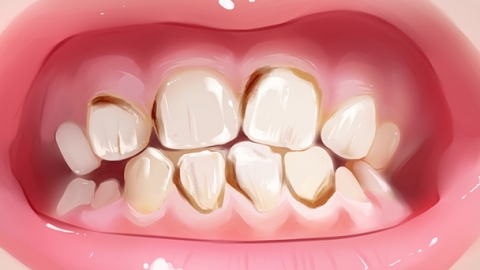How to address large gaps between teeth, and how to proceed with the repair
Large gaps between teeth may be caused by genetic factors, aging, misaligned teeth, dental caries, or chronic periodontitis, and can be repaired according to different situations. It is recommended to visit a hospital promptly and receive treatment under a doctor's guidance.

1. Genetic factors: The size of tooth gaps may be influenced by genetics. If family members have larger tooth gaps, an individual may have a higher probability of exhibiting this characteristic. It is recommended to adjust tooth position and reduce or eliminate gaps using orthodontic appliances such as metal brackets, ceramic brackets, or invisible aligners.
2. Aging: Aging can cause reduced elasticity of the gum tissue. As gums recede, parts of the teeth previously covered by gums become exposed, forming larger gaps. It is recommended to maintain regular oral hygiene, including brushing, using dental floss, and interdental brushes.
3. Misaligned teeth: Inconsistent tooth size and shape or imbalanced bite alignment may lead to larger tooth gaps. Orthodontic treatment, such as wearing braces, is recommended to use biomechanical forces to reshape the alveolar bone and move the teeth, gradually reducing and closing the gaps.
4. Dental caries: Caries are caused by acid produced by oral bacteria corroding the tooth surface, forming cavities. If left untreated, cavities may expand and affect the position of adjacent teeth, creating larger gaps. It is recommended to follow medical advice to fill cavities using dental restorations, such as amalgam, composite resin, or other materials, to restore tooth integrity and occlusal function.
5. Chronic periodontitis: Chronic periodontitis may be related to infections and can lead to destruction of periodontal tissues, gum recession, tooth loosening due to loss of support, and formation of gaps, possibly accompanied by symptoms such as gum bleeding, redness, swelling, and pain. It is recommended to undergo basic periodontal treatment under medical guidance, such as scaling and root planing, and follow medical advice regarding the use of medications such as cefixime dispersible tablets, metronidazole tablets, or tinidazole tablets for treatment.
There are various methods to repair large tooth gaps, and the appropriate method should be selected based on individual conditions. Additionally, strengthening daily care and preventive measures helps maintain dental health and aesthetics.




